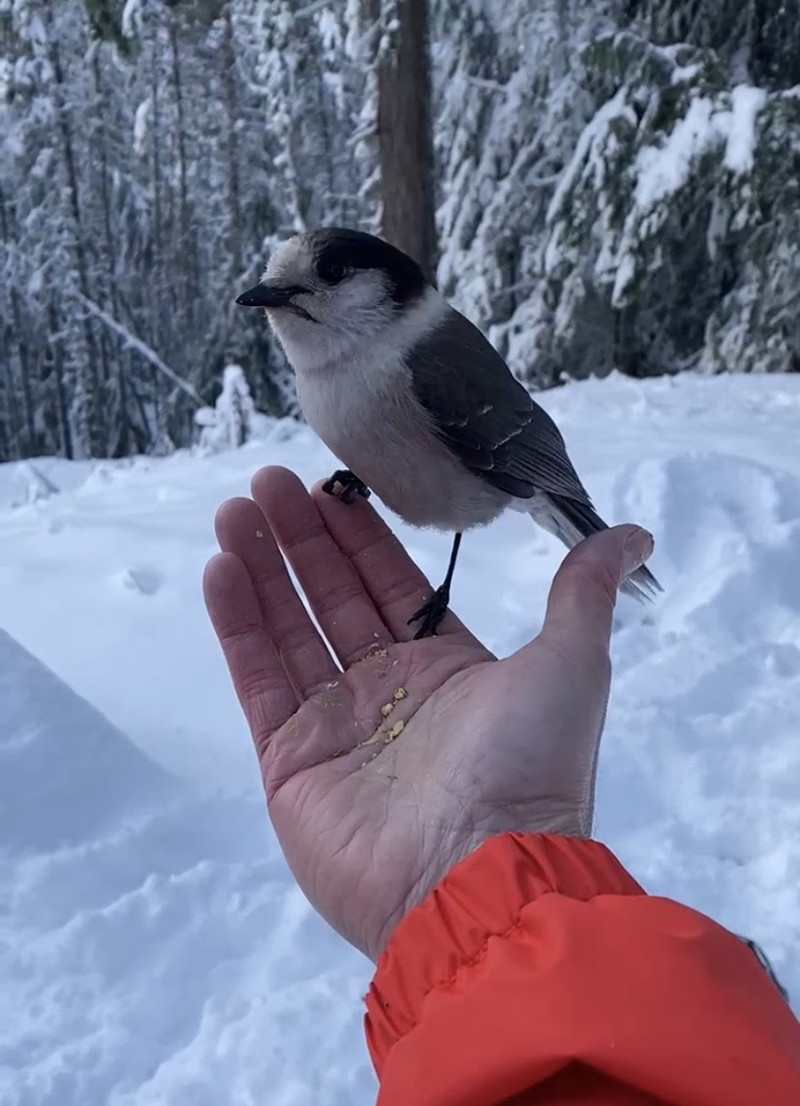Year-round hiking in the Fraser Valley offers countless possibilities and dangers
Robert and Kathryn Harris relocated their family to Chilliwack from England in 2016 for professional reasons and quickly realized they had landed in an adventurer’s paradise. The family immediately incorporated a wide range of outdoor activities into their lifestyles, with hiking being one of their year-round choices.
“Sunday is usually our hiking day because it beats sitting on a treadmill in a gym. We can go on different hikes every time for months on end and never have to repeat. I think once people get out, they’ll be surprised by the experience; with the easy access to nature and the possibility of seeing wildlife, it’s better than a drug,” Rob Harris said.
Harris admits the first winter here in 2016 was brutal because they knew little about snow and were forced into a steep learning curve. “But now,” he said, after a couple of years of experience, “snow’s not a barrier.” Regardless of weather conditions, hiking is his regular mental health activity after a busy work week. He frequents the trails of Chilliwack River Valley, Harrison’s Sasquatch Provincial Park, and even just explores forest service roads to see where they lead.
For hikers, the Fraser Valley can be a paradise with the Coastal and Cascade mountain ranges providing magnificent natural boundaries. But, easy access to trails, rugged terrain, and backcountry can lure inexperienced hikers into challenging and sometimes dangerous situations. Winter conditions add complex dynamics that can become life-threatening.
B.C. Mountaineering Club (BCMC) president Chris Ludwig recommends joining local outdoor clubs like the Valley Outdoor Association or the Hiking Club, which is designed just for beginners, and taking the time to learn skills from experienced hikers, club volunteers, and professionals. Through volunteer organizations like the BCMC, inexperienced hikers can learn about trip planning and preparation, navigation, first aid, survival, and much more. He also advised inexperienced hikers to go in a group with people familiar with the area.
When winter hiking, Ludwig recommends preparing for a worst-case scenario by bringing along a backpack with an emergency shelter, extra warm clothing, a headlamp with fresh batteries, a map and compass, and food and water. He said drinking water is as important in a winter setting as it is on a hot day, but many fail to stay hydrated.
“Important points many people overlook in winter conditions include sweat management and adjusting clothing. Learning to layer clothes is critical to preventing excess sweating which can quickly lead to cold exposure and hypothermia,” Ludwig said.
Ludwig and his volunteers monitor the trails with cameras and have noticed exponential growth in the number of hikers, even without the COVID-19 pandemic. This increase in outdoor adventurers puts additional strains on the ecosystem, trails, park staff, and first responders that will respond to emergency situations.
“The tenths of a penny spent by the government supports very limited trail maintenance, infrastructure, volunteer training, and equipment,” Ludwig explained, going on to say, “People need a self-reliance mentality because Search and Rescue are not an hour away. Don’t be overconfident; you may do something to hurt yourself.”
A lack of planning and preparation can very quickly turn a beautiful winter hike into an emergency survival situation. Chilliwack Search and Rescue (SAR) manager Dan McAuliffe advised hikers of every experience level to make appropriate plans by checking local online resources for information regarding weather conditions, road access, trail conditions, and potential park closures.
“Learn about winter travel and basic info about avalanches. From there you can decide what level of training you need and what terrain you want or don’t want to go into. Before you go out, make a trip plan and leave it with someone who will know if you are not back as scheduled and can call for help. Don’t change the plan and go to a different trail/hike without letting someone know,” McAuliffe said.
McAuliffe, and his unpaid volunteers at SAR, have seen an almost 50 per cent increase in incident calls during 2020, and although winter months see less calls, the winter conditions significantly contribute to the challenges faced by rescuers. The Chilliwack SAR webpage has a trip planner notification form and a hiking tips page. Both pages offer essential information for hikers of all experience levels. McAuliffe also recommends Avalanche Canada’s webpage as a starting point for any winter-related travel or trip planning.
If you fear for the safety of a friend or loved one, “Call 911 and report the problem. The RCMP will activate SAR for lost or missing people. Emergency Health Services will activate SAR for injured people in the wilderness. Chilliwack SAR will then get a task number from Emergency Management B.C. and call out its members,” McAuliffe said.
With the close proximity to so much outdoor adventure, it is essential for new and inexperienced hikers to learn about the potential dangers associated with hiking. The additional complexities associated with inclement and winter weather conditions can rapidly turn a fun activity into a survival situation. Safety is always the priority. Hike in groups, be open to learning about safety, and consider joining a local club so you can maximize your enjoyment of the great outdoors.
Rob Harris
Steve is a third-year BFA creative writing/visual arts student who’s been a contributing writer, staff writer and now an editor at The Cascade. He's always found stories and adventures but now has the joy of capturing and reporting them.


